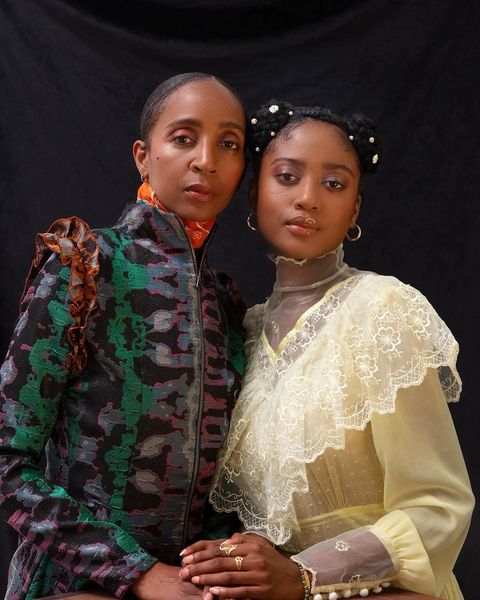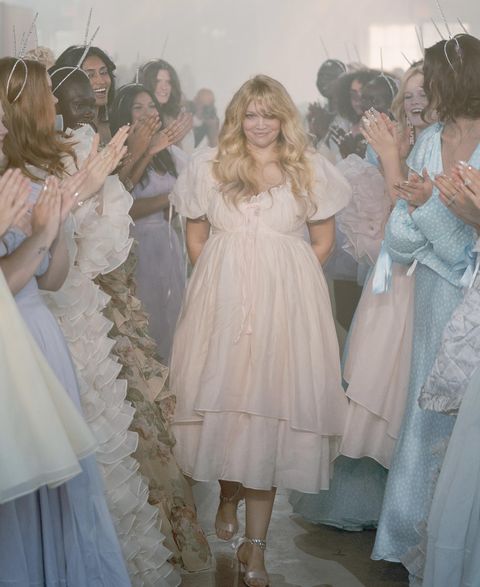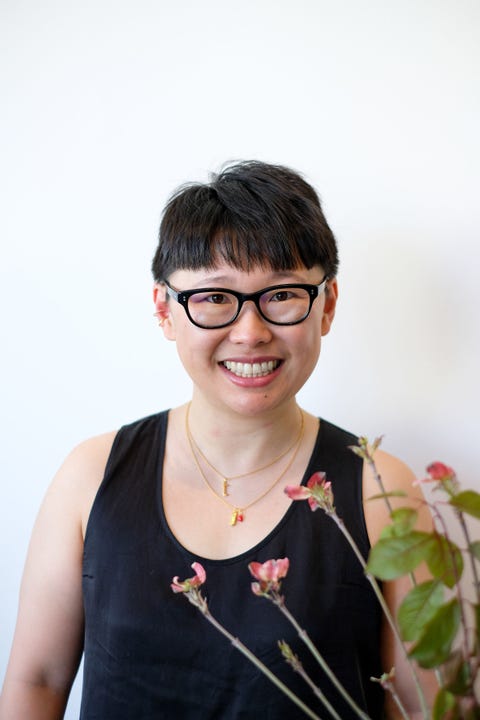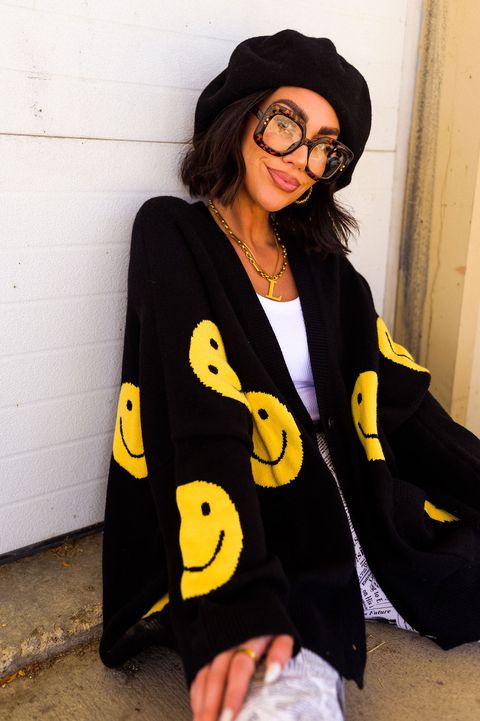In The Devil Wears Prada, fashion-ambivalent Andy Sachs is memorably dressed down by her boss, famed fashion editor Miranda Priestly, for daring to question her dedication to details.
“You made a choice that exempts you from the fashion industry, when in fact you’re wearing a sweater that was selected for you by the people in this room … from a pile of ‘stuff,’” Miranda, played by Meryl Streep, says in what might be the most biting clothes-related dialogue in cinematic history.
As terrifying as the editor of Runway magazine proved to be, she does have a point. For all our seemingly individualistic fashion choices, there is a legion of people behind the scenes crafting trends, guiding commerce, and invisibly leading our hands to the pieces that we’ll be wearing for years. But these days, it’s not just the major fashion houses or expansive commercial brands that are dictating what, exactly, should be in style at any given moment. With new paradigms — like social media marketing, for instance — allowing more cult and individually run fashion labels to thrive, who is setting today’s trends and ultimately moving the market has become more egalitarian than ever.
Which is why this month we’re honoring five of our favorite women who have taken a different approach to the fashion world. Through creating their own lines and companies, they’ve managed to craft their own narratives, step outside of the expected, and create less waste in the process. What’s not to love? From creating resort chic to magical princess-style dresses, to practical jewelry and colorful playsuits, read on to discover five women who could become your new favorite designers.
Rebecca Henry and Akua Shabaka, founders of House of Aama
As Rebecca Henry and Akua Shabaka recall, they didn’t know they were starting a fashion label. The original inception of House of Aama was an Etsy shop where the mother-and-daughter team would sell upcycled vintage fashions. However, as their shared passion grew, so did their fan base, which now includes Chlöe Bailey, who wore their La Sirène Bodycon Maxi Dress on a recent Allure magazine cover.
Their original pieces aren’t just a case of gorgeous design. (Although certainly their elegant dresses, skirts, and suits are created to stand out.) Each collection begins with a story and history, like their recent release SALT WATER, a glamorous striped-skirt and retro swimsuit tribute to the Black seafaring and resort legacy. Context matters, and through the House of Aama, clothing becomes a vehicle for both personal expression and historical celebration.
On forming a working relationship
Henry: “I have to remind myself some days, who’s mom, and who’s the daughter? Akua is responsible for what you’re seeing on the website, what you’re seeing on our Instagram, and our social media, and she’s the project manager for our company. She is more in that moving-things-along, authoritarian type of role. We are in a parent-child relationship even though Akua is an adult. But a lot of times, we’re so focused on the business aspect that we really have to step back and cultivate that relationship.”
Shabaka: “My mom and I have always had a close relationship. I think that us having the business when we were doing it when I was younger and just getting into just craft making it, it brought us closer because it was her interest. We were able to share that interest together. And so, I think that us having the joint passion of expression, telling stories, research, and Black history just brought us together. And I think that helped my childhood and going into adulthood because we had something that we could share together.”
Why storytelling is an important part of their brand
Henry: “I think it’s naturally just who we are. I’ve always prided myself on being a person that just independently was interested in history and culture and time periods. I’ve always had a serious library of books. So, when we started the brand, we didn’t really think, ‘Oh, we are setting up to start a fashion brand!’ It really is an extension of our interest in who we are as people. We really do see ourselves as folklorists, anthropologists, people that are digging deep and uncovering these histories. And so, the brand is really just a sartorial expression of those interests. If you look at our Instagram, we really put a lot of emphasis into the visual storytelling because we want to immerse people into a world.”
Shabaka: “I’m really thankful to have a mother who has done so much work in that space. Just her and her own search for knowledge and understanding of culture. Before I even was conceived, she had already had an immersive library and space for the things that would then come later in life.”
Henry: “I think a pivotal dress in that collection is that Southern Girl Victorian dress. There’s a story behind that collection. Bloodroot was a medicinal herb that my grandmother used to give myself and my cousins when we were at the farm when I was a child in Louisiana. At the time, I didn’t really think much of it. But as I became older and started doing more research into different sorts of things, I discovered that that bloodroot was actually a type of protector and guardian for the family. So, that Bloodroot collection is really a nod to maternal lineage, the Creole lineage coming out of Louisiana. The collection also focuses on the search for meaning and identity that formerly enslaved people had in terms of coming into the sense of their own freedom and just how they want to be in the world, and presenting themselves in the world with a sense of dignity and grace.”
Kimberley Gordon, founder of Selkie
During lockdown, just as it seemed tie-dye sweats were prepared to take over our collective consciousness, a viral new fashion trend emerged — the puff dress. Created by Selkie founder Kimberley Gordon, the full-skirt dresses were equal parts a product of childhood and royal fantasies, and quickly took over social media and celebrity closets. (Paris Hilton is a fan. Ditto for the stars of One Tree Hill.) The line quickly grew to include cozy sweats, jackets, jumpsuits, and even a line of bedsheets … with matching dresses and nightgowns, of course.
Gordon admits to having a love of all things feminine and fantastical, a drive that’s led her to create elaborate gowns and even dream of starting a second line of “mommy and me” fashions. “I noticed when I was getting maternity clothes, they don’t make them size inclusive,” she notes. “If you look anywhere like swimwear, lingerie — like we haven’t even started tapping the surface of size inclusion.” But no matter what direction the brand takes, Gordon remains dedicated to empowering buyers to live their own fairy tales.
Why she wants to make clothes for everyone
“We grew up in a world where you were not shown that it was okay to be anything but a thin white woman. There weren’t plus-size model agencies. There was a time when I didn’t even think about the fact that we should be using other sizes. Because everyone told me that was wrong. Slowly, I could see, and I was angry about this thing that was being told to me over and over again. It was 2013 [with her previous company, Wildfox], and I wanted to change, but I had a partner. So, I knew when I started Selkie, it was going to represent women. Just by doing that makes my brand an activist brand, and I actually don’t think it should be that way. Making choices and showcasing different types of women shouldn’t be activism. But the hard part about that is that you have to look into the mirror and realize that I never can quite improve enough. I’m always trying, but it’s a constant catch-up game. People are angry about what they’ve been dealing with, and rightfully so. They’re angry that I’m one of the only brands that they can shop — and that makes me angry too. The whole goal is to get more brands to carry more sizes and more people out there doing what I’m doing.”
Why validation feels so important
“It’s mostly men investing in companies. It’s actually so rare to find women with money that are investing. The men that I met with, it was always the same thing. Either they were like, ‘Oh, you’re so sexy; you’re pretty,’ or ‘The fashion world is dying; you’re not gonna make any money.’ They really wanted me to question my career choice. When I did get money from Wildfox, I put all of it into the company. I had this opportunity to grow the brand again, and it took a while. Validation did not come for at least two years. It’s so interesting as a mother now; I think that it’s important for people to hear that someone believes in them and believes that they are magic. Even just someone you’re in love with that says, ‘You’re special.’ This is so valid and makes the whole day better. It’s the same thing with the brand. [Hearing it] from the fans feels validating. But when your friends say things like, ‘Oh, my gosh, you did it again!’ it feels so good.”
How she carves out time to be creative while running a business
“I have to schedule time. I actually really love working fast. I don’t mind working this way because I really love running the business as well. When I get to be creative, usually what happens is I’ll get like a trigger that makes me think, ‘Oh, my god, that’s it!’ Like right now, I’m planning to do a collab with an exciting childhood toy. The minute that I started talking to the people about licensing, [ideas] just came rushing in. So, let’s see what happens. And also, even talking to people like you when I’m describing the process, sometimes that will trigger real feelings and thoughts. You need to take it up when you can — because creativity does not come from an early morning. Creativity comes from those moments where you’re relaxed but sort of spiraling into an inspired place. It can come from just being drunk with your friends in Palm Springs, like, ‘Yeah, that’s a good collection!’ When you’re talking about a movie that everyone loves. Honestly, hearing about what people love, that makes a huge difference. Clothing is a way to celebrate what you love and who you are every day.”
Trisha Okubo, founder and creative director of Maison Miru
There’s a misconception that fashion is driven by right-brain creatives — one that a conversation with Trisha Okubo, founder and creative director of Maison Miru, immediately shatters. Leaning into her training as an engineer, Okubo has created a line of sleek unisex jewelry aimed at minimalists who appreciate their practicality with a side of sparkle. But inspiration often comes from more unlikely sources as well.
“So many of our pieces are symbolic, and our new packaging features super-cute characters inspired by children’s book illustrations,” Okubo reveals. “I spend a lot of time reading to my 2-year-old daughter — and I felt the best visual encapsulation of the brand was a system of symbolic characters that represent the core values of the brand: the heart for love and connection, the lightning bolt for energy and inspiration, the moon for clarity and intuition, and the star for wishes and hopes.”
How she came up with the idea of a capsule collection of jewelry
“I started Maison Miru because I needed Maison Miru. When I was 28, I quit my corporate job to take a gap year. I lived out of a suitcase for three months while on the road. I edited down my clothes to a capsule wardrobe, and I realized that I wanted the same thing for my jewelry.
So, I designed THE SYSTEM. It’s a capsule set of jewelry that you can infinitely remix to make your signature look. It’s full of our bestsellers — from our Classic Huggies Hoops to our internet-famous Nap Earrings, which are super-comfortable flat-back earrings that you can wear while working out, showering, and sleeping. At Maison Miru, we are about systems and routines to make life easier. Having a system is like a superpower — you can do more with less so you’re free to go live your life and do all of the things you want to do. Sometimes you need the box in order to think outside the box, and systems do this for me.”
On dealing with self-doubt while running a business
“Self-doubt is completely natural, and like any other elephant in the room, it’s best to acknowledge it in order to take away its power. When you’re running your own business, the most important thing to do is to keep moving. Sometimes you’re moving forward, sometimes it’s sideways, but you don’t make progress unless you get out of your head and start moving. Maybe it’s the engineer in me, but I love 2×2 matrices. I think of decisions in two dimensions: reversible versus nonreversible, and important versus not important. Decisions that are important and nonreversible are where you want to focus your energy. If a decision is important and reversible, you’re best off by making a quick decision and seeing what happens. If a decision is not important, then whether it’s reversible or not doesn’t really matter — just pick something and move on with your life. I’ve been chasing perfection my entire life, but I’ve learned that the most important thing is to keep moving forward. I am far from perfect, but it’s my great hope that my effect on the world is net positive, and taking action is my best way to have the most impact.”
Expanding her view of success
“When you’re in school, you’re rewarded for individual achievement: doing well on tests and projects. Working together is considered cheating! But in the real world, real success is not about the individual, it’s about teamwork and how we can make the greatest impact together. Like THE SYSTEM, our capsule jewelry wardrobe, we are all better together — and together, we’re stronger than the sum of our parts.”
Lex Nevin, founder and CEO of Dressed in Lala
When it came to defining her personal style, Lex Nevin, the creative force behind Dressed in Lala, got some help from social media.
“There is a trend on TikTok where you nail down your style in three words, and it’s supposed to be a major game changer when shopping, getting dressed, and in my case, designing,” she says. “I landed on the words: maximalist, edgy, and casual. I know these words feel like opposites, but I think that’s a great explanation of my style and Lala.”
It’s that energy that led Nevin to design the bold pieces that define her line — think jewel-toned sets, oversized cardigans adorned with happy faces and aliens, and all things checkerboard chic. It’s the wardrobe of someone who is confident and ready to be themselves as they move through the world, which, to hear Nevin explain it, is exactly the vibe she’s hoping to impart.
“I think my parents did a pretty good job of encouraging me to be bold and powerful and unapologetic as a person,” she says. “I always felt like I could achieve anything growing up as a girl, and I realize not a lot of girls felt that way.”
When she realized her skills as a designer matched her visions
“You know when you go around the classroom on the first day of school, and everyone says their name, and what they do for fun, or what makes them unique? I always had anxiety answering this question because I truly felt like I didn’t have a talent or hobby. Growing up, we are taught that talents are obvious things: playing the piano, dance, soccer, drawing, etc. I always felt dumb because my favorite hobby was shopping and clothes. How did that make sense? Now, it all adds up. I wish I could go back and tell that girl that it’s actually her superpower. It took me going to college for something I wasn’t super-passionate about and doing what I thought I was supposed to do for about 25 years to realize that I have an eye and style that not a lot of people have. I’m not good at this; I’m amazing at it. Once I started explaining my vision and getting samples back, I was like, ‘Whoa. This hasn’t been done before.’”
On pushing back against the fear of failure
“My husband, Matt, is the typical Libra. He [has] total scales-of-justice vibes. I can go to him, and he’s great at being supportive of me but also being honest and telling me what I might not want to hear. My best friend, Kinzie, is the epitome of unfiltered feedback. She always tells me how it is and will tell me if something is cringe, or if I should order 10,000 pieces of it. Lala wouldn’t be where it is without either of them.”
Her advice to future designers
“You can’t pay attention to what other people are doing. Don’t follow other businesses on Instagram like yours. Don’t spend your time focusing on what others are working on. Put all that energy into what you are doing. Stay in your lane. Put your blinders on. Stay in your own little Lala land. Live in your own world. Focus on your magic. Trust me. I still get impostor syndrome calling myself a designer. I get it. I think it just feels too good to be true. But it isn’t. I worked really damn hard. And I created some really cool s–t. And you can too. There is literally nothing stopping you from achieving your dreams except you. Just take the jump. Be consistent. Believe in yourself. Nothing haunts me more than thinking I’ll get to the end of my life and think, ‘I always wanted to do that, but I was too scared.’”
Laura Studarus is a Los Angeles-based travel writer who has contributed to Fast Company, BBC Travel, and Thrillist. Follow her on Twitter at @Laura_Studarus.
Get Shondaland directly in your inbox: SUBSCRIBE TODAY




